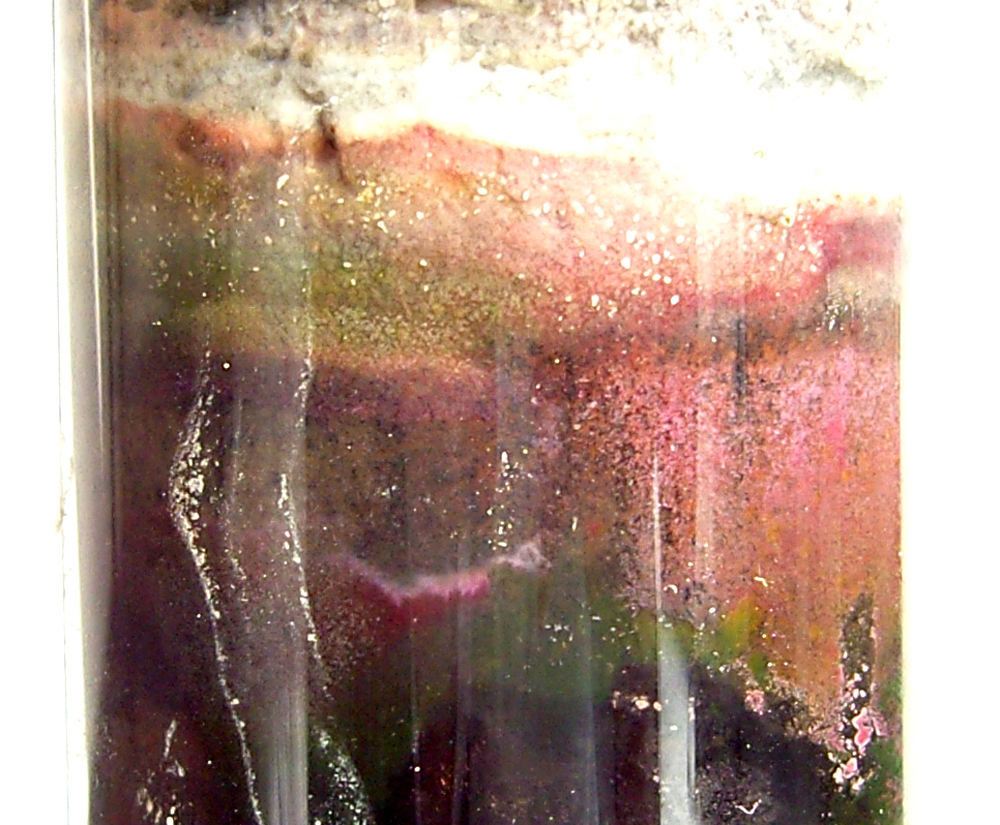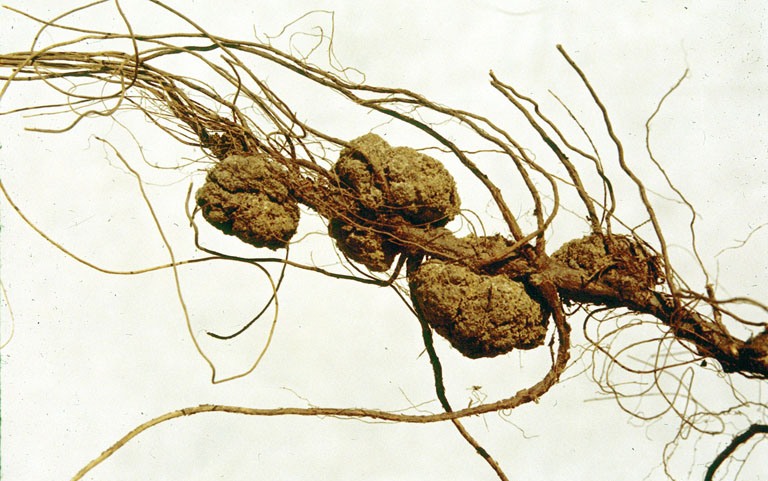|
Branching Order Of Bacterial Phyla (Woese, 1987)
There are several models of the Branching order of bacterial phyla, one of these was proposed in 1987 paper by Carl Woese. The branching order proposed by Carl Woese was based on molecular phylogeny, which was considered revolutionary as all preceding models were based on discussions of morphology. (''v.'' Monera). Several models have been proposed since and no consensus is reached at present as to the branching order of the major bacterial lineages. The gene used was the 16S ribosomal DNA. Tree The names have been changed to reflect more current nomenclature used by molecular phylogenists. Note on names Despite the impact of the paper on bacterial classification, it was not a proposal for change of taxonomy. Consequently, many clades were given official names. Only subsequently, this occurred: for example, the "purple bacteria and relatives" were renamed Proteobacteria. Discussion In 1987, Carl Woese, regarded as the forerunner of the molecular phylogeny revolution, ... [...More Info...] [...Related Items...] OR: [Wikipedia] [Google] [Baidu] |
Carl Woese
Carl Richard Woese (; July 15, 1928 – December 30, 2012) was an American microbiologist and biophysicist. Woese is famous for defining the Archaea (a new domain of life) in 1977 through a pioneering phylogenetic taxonomy of 16S ribosomal RNA, a technique that has revolutionized microbiology. He also originated the RNA world hypothesis in 1967, although not by that name. Woese held the Stanley O. Ikenberry Chair and was professor of microbiology at the University of Illinois at Urbana–Champaign. Life and education Carl Woese was born in Syracuse, New York on July 15, 1928. Woese attended Deerfield Academy in Massachusetts. He received a bachelor's degree in mathematics and physics from Amherst College in 1950. During his time at Amherst, Woese took only one biology course (Biochemistry, in his senior year) and had "no scientific interest in plants and animals" until advised by William M. Fairbank, then an assistant professor of physics at Amherst, to pursue biophysics at Y ... [...More Info...] [...Related Items...] OR: [Wikipedia] [Google] [Baidu] |
Purple Bacteria
Purple bacteria or purple photosynthetic bacteria are Gram-negative proteobacteria that are phototrophic, capable of producing their own food via photosynthesis. They are pigmented with bacteriochlorophyll ''a'' or ''b'', together with various carotenoids, which give them colours ranging between purple, red, brown, and orange. They may be divided into two groups – purple sulfur bacteria ( Chromatiales, in part) and purple non-sulfur bacteria ( Rhodospirillaceae). Purple bacteria are anoxygenic phototrophs widely spread in nature, but especially in aquatic environments, where there are anoxic conditions that favor the synthesis of their pigments. Taxonomy Purple bacteria belong to phylum of ''Pseudomonadota''. This phylum was established by Carl Woese in 1987 calling it "purple bacteria and their relatives" even if this is not appropriate because most of them are not purple or photosynthetic. Purple bacteria are distributed between 3 classes:''Alphaproteobacteria'', ''Betap ... [...More Info...] [...Related Items...] OR: [Wikipedia] [Google] [Baidu] |
Gammaproteobacteria
Gammaproteobacteria is a class of bacteria in the phylum Pseudomonadota (synonym Proteobacteria). It contains about 250 genera, which makes it the most genera-rich taxon of the Prokaryotes. Several medically, ecologically, and scientifically important groups of bacteria belong to this class. It is composed by all Gram-negative microbes and is the most phylogenetically and physiologically diverse class of Proteobacteria. These microorganisms can live in several terrestrial and marine environments, in which they play various important roles, including ''extreme environments'' such as hydrothermal vents. They generally have different shapes - rods, curved rods, cocci, spirilla, and filaments and include free living bacteria, biofilm formers, commensals and symbionts, some also have the distinctive trait of being bioluminescent. Metabolisms found in the different genera are very different; there are both aerobic and anaerobic (obligate or facultative) species, chemolithoautotrophic ... [...More Info...] [...Related Items...] OR: [Wikipedia] [Google] [Baidu] |
Spirillum
''Spirillum'' is a genus of Gram-negative bacteria in the family ''Spirillaceae'' of the ''Nitrosomonadales'' of the ''Betaproteobacteria''.Garrity, George M.; Brenner, Don J.; Krieg, Noel R.; Staley, James T. (eds.) (2005). Bergey's Manual of Systematic Bacteriology, Volume Two: The Proteobacteria, Part C: The Alpha-, Beta-, Delta-, and Epsilonproteobacteria. New York, New York: Springer. pp. 354–361. .Podkopaeva (D.), Grabovich (M.), Kuever (J.), Lysenko (A.M.), Tourova (T.P.), Kolganova (T.V.) and Dubinia (G.): Proposal of Spirillum winogradskyi sp. nov., a novel microaerophilic species, an amended description of the genus Spirillum and Request for an Opinion regarding the status of the species Spirillum volutans Ehrenberg 1832. Int. J. Syst. Evol. Microbiol., 2009, 59, 2916-2920. There are two species of ''Spirillum'' with validly or effectively published names - ''Spirillum winogradskyi'' and ''Spirillum volutans''. Other "species" classified as ''Spirillum'' such as "' ... [...More Info...] [...Related Items...] OR: [Wikipedia] [Google] [Baidu] |
Alcaligenes
''Alcaligenes'' is a genus of Gram-negative, Aerobic organism, aerobic, Bacillus (shape), rod-shaped bacteria. The species are motile with amphitrichous flagella and rarely nonmotile. It is a genus of Non-fermenter, non-fermenting bacteria (in the family Alcaligenaceae). Additionally, some strains of ''Alcaligenes'' are capable of anaerobic respiration, but they must be in the presence of nitrate or nitrite; otherwise, their metabolism is respiratory and never fermentative; The genus does not use Carbohydrate, carbohydrates. Strains of ''Alcaligene''s (such as ''A. faecalis'') are found mostly in the Gastrointestinal tract, intestinal tracts of Vertebrate, vertebrates, decaying materials, dairy products, water, and soil; they can be isolated from human respiratory and gastrointestinal tracts and wounds in hospitalized patients with compromised immune systems. They are occasionally the cause of opportunistic infections, including Sepsis, nosocomial sepsis. ''Alcaligenes faecalis'' ... [...More Info...] [...Related Items...] OR: [Wikipedia] [Google] [Baidu] |
Thiobacillus
''Thiobacillus'' is a genus of Gram-negative Betaproteobacteria. '' Thiobacillus thioparus'' is the type species of the genus, and the type strain thereof is the StarkeyT strain, isolated by Robert Starkey in the 1930s from a field at Rutgers University in the United States of America. While over 30 "species" have been named in this genus since it was defined by Martinus Beijerinck in 1904, (the first strain was observed by the biological oceanographer Alexander Nathansohn in 1902 - likely what we would now call ''Halothiobacillus neapolitanus''), most names were never validly or effectively published. The remainder were either reclassified into ''Paracoccus'', '' Starkeya'' (both in the Alphaproteobacteria); '' Sulfuriferula'', ''Annwoodia'', ''Thiomonas'' (in the Betaproteobacteria); ''Halothiobacillus'', ''Guyparkeria'' (in the Gammaproteobacteria), or ''Thermithiobacillus'' or ''Acidithiobacillus'' (in the Acidithiobacillia). The very loosely defined "species" '' Thiobacillu ... [...More Info...] [...Related Items...] OR: [Wikipedia] [Google] [Baidu] |
Rhodocyclus
''Rhodocyclus'' is a genus of gram-negative bacteria from the family of Rhodocyclaceae which belongs to the class of Betaproteobacteria Betaproteobacteria are a class of Gram-negative bacteria, and one of the eight classes of the phylum Pseudomonadota (synonym Proteobacteria). The ''Betaproteobacteria'' are a class comprising over 75 genera and 400 species of bacteria. Togeth .... References Bacteria genera Rhodocyclaceae {{Betaproteobacteria-stub ... [...More Info...] [...Related Items...] OR: [Wikipedia] [Google] [Baidu] |
Betaproteobacteria
Betaproteobacteria are a class of Gram-negative bacteria, and one of the eight classes of the phylum Pseudomonadota (synonym Proteobacteria). The ''Betaproteobacteria'' are a class comprising over 75 genera and 400 species of bacteria. Together, the ''Betaproteobacteria'' represent a broad variety of metabolic strategies and occupy diverse environments from obligate pathogens living within host organisms to oligotrophic groundwater ecosystems. Whilst most members of the ''Betaproteobacteria'' are heterotrophic, deriving both their carbon and electrons from organocarbon sources, some are photoheterotrophic, deriving energy from light and carbon from organocarbon sources. Other genera are autotrophic, deriving their carbon from bicarbonate or carbon dioxide and their electrons from reduced inorganic ions such as nitrite, ammonium, thiosulfate or sulfide — many of these chemolithoautotrophic. ''Betaproteobacteria'' are economically important, with roles in maintaining soil p ... [...More Info...] [...Related Items...] OR: [Wikipedia] [Google] [Baidu] |
Nitrobacter
''Nitrobacter'' is a genus comprising rod-shaped, gram-negative, and chemoautotrophic bacteria. The name ''Nitrobacter'' derives from the Latin neuter gender noun ''nitrum, nitri'', alkalis; the Ancient Greek noun βακτηρία'','' βακτηρίᾱς'','' rod. They are non-motile and reproduce via budding or binary fission. ''Nitrobacter'' cells are obligate aerobes and have a doubling time of about 13 hours. ''Nitrobacter'' play an important role in the nitrogen cycle by oxidizing nitrite into nitrate in soil and marine systems. Unlike plants, where electron transfer in photosynthesis provides the energy for carbon fixation, ''Nitrobacter'' uses energy from the oxidation of nitrite ions, NO2−, into nitrate ions, NO3−, to fulfill their energy needs. ''Nitrobacter'' fix carbon dioxide via the Calvin cycle for their carbon requirements. ''Nitrobacter'' belongs to the Alphaproteobacteria class of the Pseudomonadota. Morphology and characteristics ''Nitrobacter'' are gr ... [...More Info...] [...Related Items...] OR: [Wikipedia] [Google] [Baidu] |
Rickettsiae
''Rickettsia'' is a genus of nonmotile, gram-negative, nonspore-forming, highly pleomorphic bacteria that may occur in the forms of cocci (0.1 μm in diameter), bacilli (1–4 μm long), or threads (up to about 10 μm long). The term "rickettsia" has nothing to do with rickets (which is a deficiency disease resulting from lack of vitamin D); the bacterial genus ''Rickettsia'' instead was named after Howard Taylor Ricketts, in honor of his pioneering work on tick-borne spotted fever. Properly, ''Rickettsia'' is the name of a single genus, but the informal term "rickettsia", plural "rickettsias", usually not capitalised, commonly applies to any members of the order Rickettsiales. Being obligate intracellular bacteria, rickettsias depend on entry, growth, and replication within the cytoplasm of living eukaryotic host cells (typically endothelial cells). Accordingly, ''Rickettsia'' species cannot grow in artificial nutrient culture; they must be grown either in tissue or embr ... [...More Info...] [...Related Items...] OR: [Wikipedia] [Google] [Baidu] |
Agrobacterium
''Agrobacterium'' is a genus of Gram-negative bacteria established by H. J. Conn that uses horizontal gene transfer to cause tumors in plants. ''Agrobacterium tumefaciens'' is the most commonly studied species in this genus. ''Agrobacterium'' is well known for its ability to transfer DNA between itself and plants, and for this reason it has become an important tool for genetic engineering. Nomenclatural History Leading up to the 1990s, the genus ''Agrobacterium'' was used as a wastebasket taxon. With the advent of 16S sequencing, many ''Agrobacterium'' species (especially the marine species) were reassigned to genera such as ''Ahrensia'', ''Pseudorhodobacter'', ''Ruegeria'', and ''Stappia''. The remaining ''Agrobacterium'' species were assigned to three biovars: biovar 1 (''Agrobacterium tumefaciens''), biovar 2 (''Agrobacterium rhizogenes''), and biovar 3 (''Agrobacterium vitis''). In the early 2000s, ''Agrobacterium'' was synonymized with the genus ''Rhizobium''. This move pr ... [...More Info...] [...Related Items...] OR: [Wikipedia] [Google] [Baidu] |


